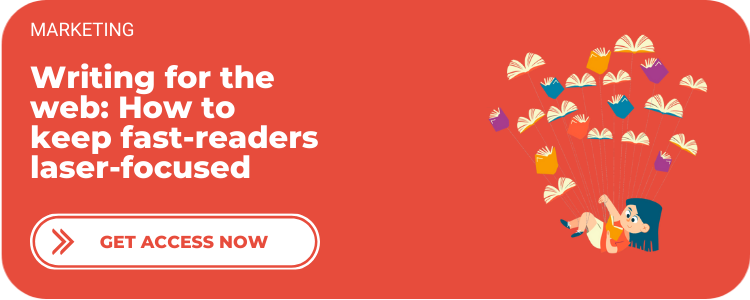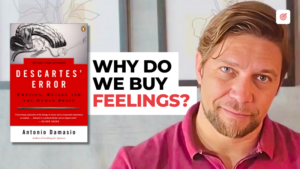There’s no other place your copywriting techniques need to persuade people to take action more than your Sales Page.
It is the place where all your marketing efforts will be paid off.
Where the stream of all your content will lead to.
In this video, we will learn 5 new techniques to craft profitable Sales Pages with confidence.
But before we get into it.
Let’s dive in.
Copywriting Example 7 – Pat Flynn: Power-up Podcasting: A step-by-step course to launch a successful podcast that gets found and grows your online brand
What can we learn from this copywriting example?
Copywriting Technique #16: Clear CTA
The first and most important aspect of Sales Pages is a clear call-to-action.
To make it absolutely clear, let’s start by understanding what you should not do there.
So, here are 3 things to avoid when writing CTAs.
1) Avoid the Paradox of Choice.
That’s the paradox of choosing nothing because there are too many choices.
Make Calls-to-Action to one single offer on your Sales Page.
2) Avoid the Specialist Syndrome.
That’s the syndrome of not telling people what to do because it looks obvious to you.
Be specific in your instructions and ask people to take action. Don’t assume anything.
3) Avoid the Bad Sales Complex.
That’s the complex of thinking that sales is something bad and end up adding fillers to make it somewhat smoother.
That will only increase friction to your Sales Page and decrease conversions as a consequence.
Making it hard for ready-to-buy clients that get to your Sales Page and are ready to convert? That is a real danger.
Avoiding those basic mistakes will clear the path to creating a clear Call-to-Action.
But now we have to ask ourselves:
What clarity means from a Sales Pitch standpoint?
Here it is: A clear Call-to-Action provides one method, one goal, and one outcome.
Let’s break this down using Pat Flynn’s Sales Pitch example:
- Method: “Step-by-step course.”
- Goal: “To launch a successful podcast.”
- Outcome: “That gets found and grows your online brand.”
Is that clear?
Copywriting Technique #17: Emotion over Reason
Purchasing is an emotional experience above all things. That means you must speak to people’s emotions instead of their reason.
You do that by inviting them into a story where they get from a point A to a point B through uour plan.
But here’s the catch.
There’s no direct pathway between point A and point B. If this was the case, people wouldn’t need help to reach their goals.
Here’s a simplistic but more realistic view:
- The point A is where they are now.
- The point B is where they want to be.
- The point C is a worse place they have to go before they can get to point B.
Why is it worse?
Because it’s the middle ground between their current set of abilities, aka comfort zone, and the future life they want.
It’s a place of transformational pain. There’s a price to pay to go over there.
The job of the guide is to provide a plan for the hero to survive the valley of desperation (point C) to the peak of transformation (point B).
To do that, your copy must provide:
- A compelling reason to leave point A.
- A believable plan to survive point C.
- An achievable pathway to get to point B.
That approach integrates your solutions to your audience’s personal story, providing an emotional connection between their goals and your solution.
You must have heard that people don't buy a screw, they buy a painting on the wall.
Pat Flynn’s”grows your online business" copy is that painting on the wall for Pat’s audience.
Let me break this down to make it crystal clear:
- Point A: They need to learn how to make a podcast.
- Point C: A step-by-step course to do that.
- Point B: Grow a business.
They don’t want to learn how to make a podcast. They want to grow their business.
Copywriting Example 8 – Cover Action Pro: Make Your Books and Products Look Sharper with 3D Mockups You Won’t Find Anywhere
What can we learn from this copywriting example?
Copywriting Technique #18: Exclusivity
“You won't find anywhere else" is a powerful statement but it must be true.
If you can integrate that level of exclusivity into your copywriting, that will break tons of objections.
Cover Action Pro offers “more than 500 pre-made art mockups” for a variety of products.
That's exclusive.
What can you tell about your services that are unmatched?
Let me tell you something about competition.
The market leader is not reserved for the best. It’s reserved for the unique.
What does that mean exactly?
2 things:
1) You will be noticed for your differentiation.
2) Differentiation breaks the market into smaller niches.
If you break down the market into small niches, you become a niche pioneer and are instantly placed on the top of that.
Differentiation is what will make people remember you.
Copywriting Example 9 – Grammarly: Everyone Can Write With Confidence
What can we learn from this copywriting example?
Copywriting Technique #19: Inclusivity
The transformation your copywriting proposes needs to be achievable.
Otherwise, people won’t feel they can make it and they will drop the call to action.
Grammarly audience uses the app to bridge the gap between their lack of writing confidence and a great written piece.
By saying “everybody can” the company provides an invitation to anyone that has ever struggled with that lack of confidence.
The copy works because it binds 3 elements of the story:
- The lack of confidence of their audience on their writing skills.
- The app that bridges the gap between their actual skills and a great copy.
- The transformation: Their clients can also feel good about their writing.
There are a few requirements to make your copy inclusive:
- It needs to use inclusive language.
- It needs to address pain points.
- It needs to provide a pathway from those pain points.
That will fill the gap between the actual state and the desired state.
Copywriting Technique #20: Empowerment
Where is your copy leading your customers to? To become a "great writer”?
Copywriting examples are compelling when they make people feel great about themselves, not when presenting something else great, like products.
What does your solution mean to people’s own goals?
Can it be integrated with their journey?
How different people will be after attending your Call-to-Action?
Is your copy showing a better version of your audience that lies on the other side of experiencing your services?
Empowerment is not a specific technique like others.
It’s the distribution of terminologies that allow your audience to believe they can achieve what they need.
It’s a theme that surrounds your message with positivity, encouragement, and trustworthiness.




